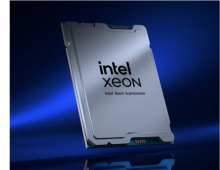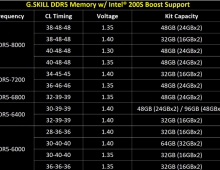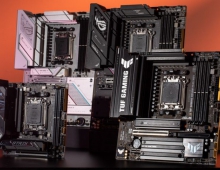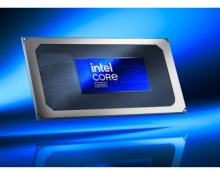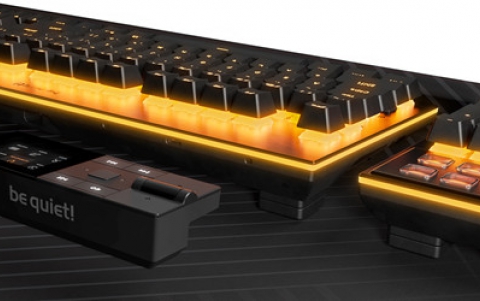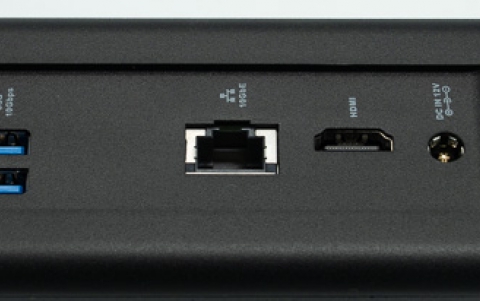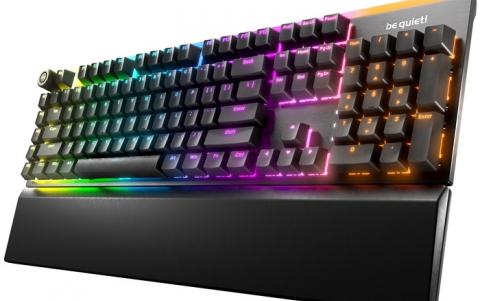
3rd Generation Intel Core Ivy Bridge Processors Released
Intel today officially introduced the quad-core 3rd generation Intel Core processor family, prmomising to deliver dramatic visual and performance computing gains for gamers, media enthusiasts and mainstream users alike.
Available now in desktop, laptop and all-in-one (AIO) designs, the new processors are the first chips in the world made using Intel's 22-nanometer (nm) 3-D tri-Gate transistor technology.
Intel today announced the following processors:
− One new Intel Core i7 Extreme Edition processor
Mobile: i7-3920XM
− Eight new Intel Core i7 processors
Mobile: i7-3820QM, i7-3720QM, i7-3612QM, 3610QM
Desktop: i7-3770K, i7-3770
Desktop Low Power: i7-3770T, i7-3770S
− Five new Intel Core i5 processors
Desktop: i5-3570K, i5-3550, i5-3450
Desktop Low Power: i5-3550S, i5-3450S
− Ten new Intel Chipset offerings (available from April 8)
Mobile: HM77, UM77, HM76, HM75
Desktop: Z77, Z75, H77, Q77, Q75, B75
− Five new wireless options:
Intel Centrino Advanced-N 6235
Intel Centrino Wireless-N 2230
Intel Centrino Wireless-N 2200
Intel Centrino Wireless-N 135
Intel Centrino Wireless-N 105

Intel?s 3-D tri-gate transistor technology and architectural enhancements help make possible up to double the 3-D graphics and HD media processing performance compared with Intel's previous generation of chips.
In the coming months, Intel will introduce additional versions of the 3rd generation Intel Core processors, to power systems ranging from Ultrabook devices, to servers and intelligent systems in retail, healthcare and other industries.
"The 3rd generation Intel Core processors were created from the ground up to generate exciting new experiences," said Kirk Skaugen, Intel vice president and general manager of the PC Client Group. "Our engineers have exceeded our expectations by doubling the performance of media and graphics versus the best processors we?ve built until today, which means incredible new visual experiences are here for new all-in-one PCs and upcoming Ultrabook devices. What makes all this possible is the combination of Intel?s leading manufacturing and processor architecture, and our unwavering commitment to drive computing innovations forward."
Until today, computers, servers and other devices have used only two-dimensional planar transistors. Adding a third dimension to transistors allows Intel to increase transistor density and put more capabilities into every square millimeter of these new processors.
Intel engineers also reworked the graphics architecture of the 3rd generation Intel Core processors. Changing the chips? architecture while at the same time shrinking the size of the underlying transistors is an acceleration of Intel?s "tick-tock" model. Previously, the company adhered to a strict ?tick-tock? model in which a new manufacturing process was introduced in 1 year (the "tick"), and the architecture of the chip (the "tock") was altered the next. The ability to accelerate the roadmap and change both the chips? architecture and the manufacturing process at the same time was made possible because Intel is one of the few companies that both designs and manufactures its chips, a method called Integrated Device Manufacturing.
The 3rd generation Intel Core processor with Intel HD Graphics 4000 delivers up to two times better 3-D graphics performance compared to the previous-generation processor. Intel HD Graphics 4000 supports Microsoft DirectX 11, OpenGL 3.1 and OpenCL 1.1.
In addition, with Intel Quick Sync Video 2.0 technology built into the new processors, users can convert their videos up to two times faster than even last year?s processors and up to 23 times faster than PCs just three years old.
The 3rd generation Intel Core processor also adds security features, including Intel Secure Key and Intel OS Guard to safeguard personal data and identity. Intel Secure Key consists of a digital random number generator that creates truly random numbers to strengthen encryption algorithms. Intel OS Guard helps defend against privilege escalation attacks where a hacker remotely takes over another person's system. These two features join existing platform security features such as Intel Identity Protection Technology (Intel IPT) and Intel Anti-Theft technology (Intel AT). When paired with the Intel Series 7 Chipset, the new processors with Intel IPT can make a portion of the screen unreadable to spyware with the "protected transaction display" feature, helping prevent a hacker from obtaining login credentials that could lead to identity theft.
Platforms based on 3rd generation Intel Core processors also deliver faster data transfer capabilities made possible by USB 3.0 integrated into the Series 7 Platform Controller Hub (PCH) and PCI Express 3.0 integrated into the processor.
Systems based on quad-core 3rd generation Intel Core processor products will be available beginning this month from system makers. Boxed versions of these processors will also be available this month from online, retail and channel resellers.
Intel today announced the following processors:
− One new Intel Core i7 Extreme Edition processor
Mobile: i7-3920XM
− Eight new Intel Core i7 processors
Mobile: i7-3820QM, i7-3720QM, i7-3612QM, 3610QM
Desktop: i7-3770K, i7-3770
Desktop Low Power: i7-3770T, i7-3770S
− Five new Intel Core i5 processors
Desktop: i5-3570K, i5-3550, i5-3450
Desktop Low Power: i5-3550S, i5-3450S
− Ten new Intel Chipset offerings (available from April 8)
Mobile: HM77, UM77, HM76, HM75
Desktop: Z77, Z75, H77, Q77, Q75, B75
− Five new wireless options:
Intel Centrino Advanced-N 6235
Intel Centrino Wireless-N 2230
Intel Centrino Wireless-N 2200
Intel Centrino Wireless-N 135
Intel Centrino Wireless-N 105

Intel?s 3-D tri-gate transistor technology and architectural enhancements help make possible up to double the 3-D graphics and HD media processing performance compared with Intel's previous generation of chips.
In the coming months, Intel will introduce additional versions of the 3rd generation Intel Core processors, to power systems ranging from Ultrabook devices, to servers and intelligent systems in retail, healthcare and other industries.
"The 3rd generation Intel Core processors were created from the ground up to generate exciting new experiences," said Kirk Skaugen, Intel vice president and general manager of the PC Client Group. "Our engineers have exceeded our expectations by doubling the performance of media and graphics versus the best processors we?ve built until today, which means incredible new visual experiences are here for new all-in-one PCs and upcoming Ultrabook devices. What makes all this possible is the combination of Intel?s leading manufacturing and processor architecture, and our unwavering commitment to drive computing innovations forward."
Until today, computers, servers and other devices have used only two-dimensional planar transistors. Adding a third dimension to transistors allows Intel to increase transistor density and put more capabilities into every square millimeter of these new processors.
Intel engineers also reworked the graphics architecture of the 3rd generation Intel Core processors. Changing the chips? architecture while at the same time shrinking the size of the underlying transistors is an acceleration of Intel?s "tick-tock" model. Previously, the company adhered to a strict ?tick-tock? model in which a new manufacturing process was introduced in 1 year (the "tick"), and the architecture of the chip (the "tock") was altered the next. The ability to accelerate the roadmap and change both the chips? architecture and the manufacturing process at the same time was made possible because Intel is one of the few companies that both designs and manufactures its chips, a method called Integrated Device Manufacturing.
The 3rd generation Intel Core processor with Intel HD Graphics 4000 delivers up to two times better 3-D graphics performance compared to the previous-generation processor. Intel HD Graphics 4000 supports Microsoft DirectX 11, OpenGL 3.1 and OpenCL 1.1.
In addition, with Intel Quick Sync Video 2.0 technology built into the new processors, users can convert their videos up to two times faster than even last year?s processors and up to 23 times faster than PCs just three years old.
The 3rd generation Intel Core processor also adds security features, including Intel Secure Key and Intel OS Guard to safeguard personal data and identity. Intel Secure Key consists of a digital random number generator that creates truly random numbers to strengthen encryption algorithms. Intel OS Guard helps defend against privilege escalation attacks where a hacker remotely takes over another person's system. These two features join existing platform security features such as Intel Identity Protection Technology (Intel IPT) and Intel Anti-Theft technology (Intel AT). When paired with the Intel Series 7 Chipset, the new processors with Intel IPT can make a portion of the screen unreadable to spyware with the "protected transaction display" feature, helping prevent a hacker from obtaining login credentials that could lead to identity theft.
Platforms based on 3rd generation Intel Core processors also deliver faster data transfer capabilities made possible by USB 3.0 integrated into the Series 7 Platform Controller Hub (PCH) and PCI Express 3.0 integrated into the processor.
Systems based on quad-core 3rd generation Intel Core processor products will be available beginning this month from system makers. Boxed versions of these processors will also be available this month from online, retail and channel resellers.



